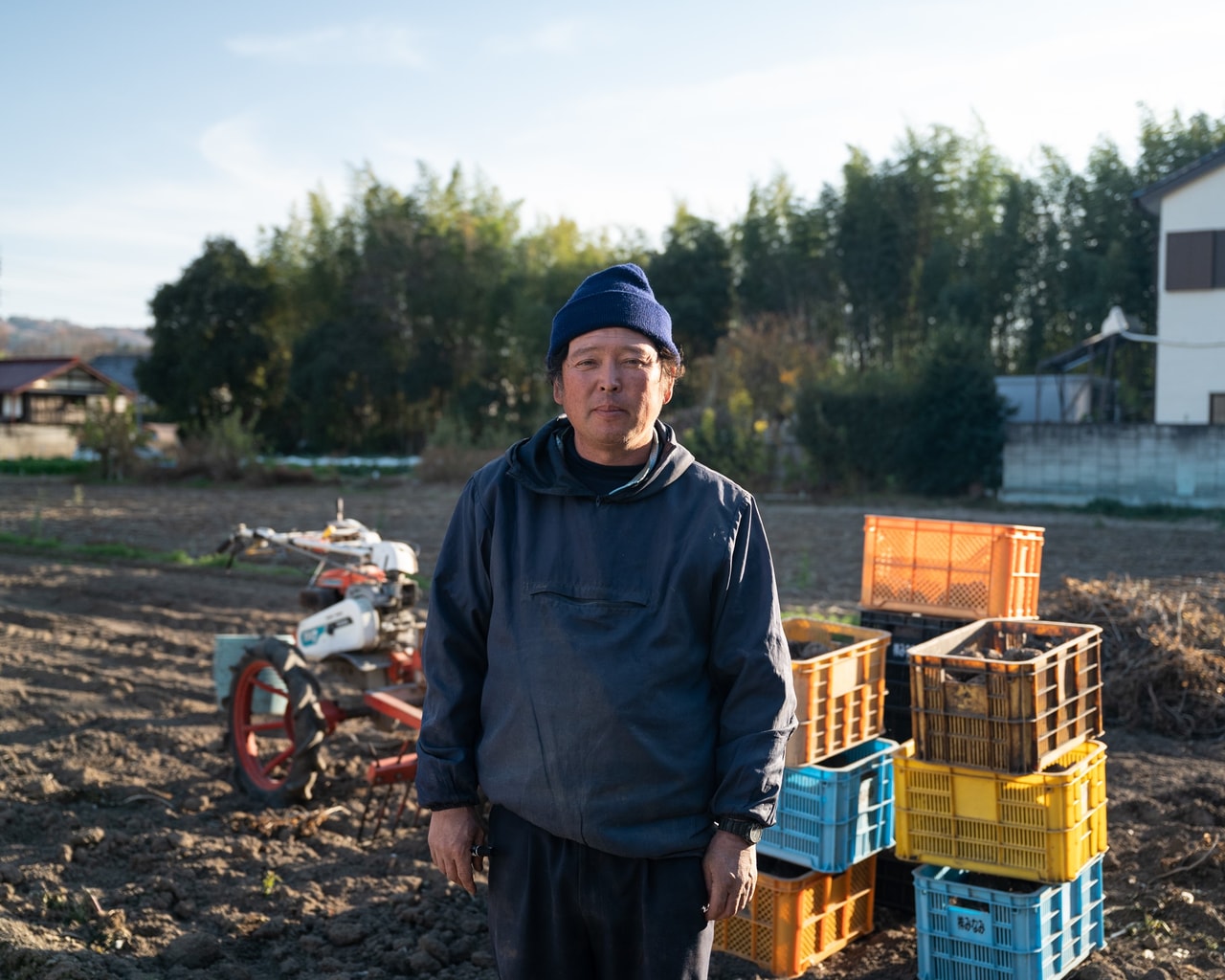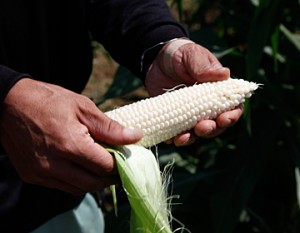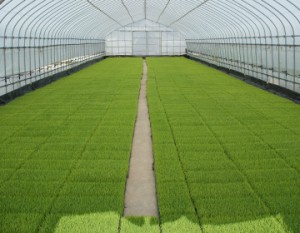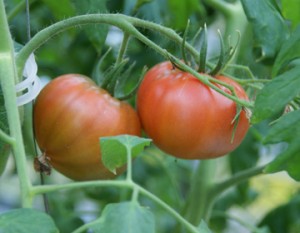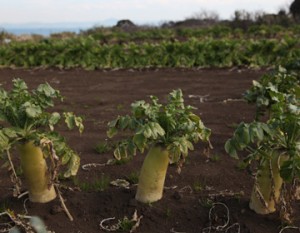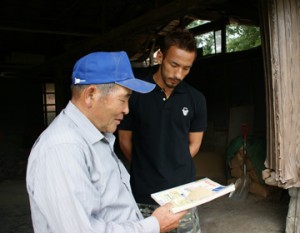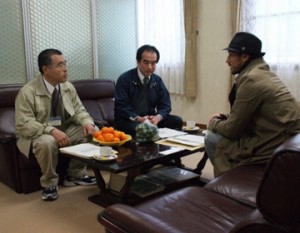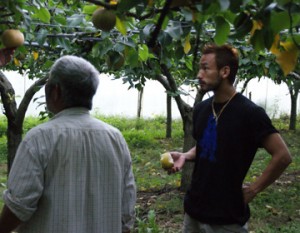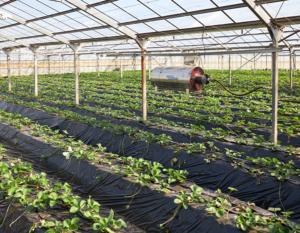Gunma Prefecture is a famous producer of konnyaku potatoes, boasting the nation’s No. 1 production volume. It has established such a firm position that it can be said with certainty that “Gunma is the place to be when it comes to konjac. One of the best handmade “raw potato konjac” is produced at Ikata Farm in Shibukawa City, the “home of konjac. The secret to its delicious taste lies in the unchanged production method and the commitment to the fantastic “Harunakuro” variety.
Gunma’s konnyaku potato accounts for 90% of the national market share

Located approximately 8 km north of Shibukawa City in the center of Gunma Prefecture. To the west is Mt. Komochi, which rises 1,296 meters above sea level, and to the east flows the Tone River, a magnificent first-class river known as one of the three major rivers in Japan. The Kamishirai district, located on a terrace on the west bank of the river, has a long and narrow topography and was once known as “Komochi Village. Ikkata Farm has been growing konnyaku potatoes here for a long time.
Ikkata Noen has been a konjac farmer for generations. Osamu Ubukata, who took over the baton from his predecessor who established the foundation of a consistent konjac business from cultivation to processing and sales, is in fact the sixth generation head of the farm. The konjac factory, which consists of a warehouse, a processing plant, and a direct sales office, is located on a site with the towering Mt.
Gunma Prefecture is a major producer of konnyaku sweet potatoes, boasting the nation’s largest harvest and more than 90% of the market share. In addition to one of the longest hours of sunlight in Japan, the prefecture is characterized by well-drained volcanic ash soil deposited by volcanic eruptions. The slopes in the mountainous areas, especially in Shibukawa City, have good drainage, and the summers are not too hot, while in winter the air is dry due to the “kara-kaze” winds that are characteristic of Gunma. These natural conditions are ideal for konnyaku potato cultivation.
Konnyaku potato is a delicate crop that is difficult to cultivate

As Mr. Ubukata says, “konnyaku potato is very delicate.” Although it has been cultivated for a long time, it was once called “lucky ball,” which could be harvested if one was lucky, because it was very susceptible to disease. Even if one tried to improve the variety, the existing “native” and “Bicchu” varieties had similar characteristics and could not be crossed, so “Shina” varieties were imported from China, and after numerous trials, a variety that was easy to grow and highly productive was successfully created. As a result, he succeeded in creating a variety that was easy to cultivate and highly productive. The following improved varieties were born: “Harunakuro,” “Akagi-Odama,” “Myogiyutaka,” and “Miyamasari. Currently, the disease-resistant “Akagi-Odama” and the new “Miyamasari” are the main varieties grown in Japan, and together they account for more than 97% of domestic production.
Incidentally, the names of the improved varieties are all derived from the three Jomo Sanzan mountains representing Gunma: Mount Haruna, Mount Akagi, and Mount Myogi. Shibukawa City in Gunma Prefecture is home to Japan’s only konjac research institute. The fact that Gunma has been engaged in steady research to improve the variety in this area seems to be a major driving force behind the fact that Gunma has become Japan’s top producer of konjac potatoes.
Once harvested, they are replanted again, taking three years to finally reach full maturity.

It takes as long as three years to harvest konnyaku potatoes. Moreover, it is not possible to leave them planted in the field for three years. This is because konjac potatoes are not good in cold weather and cannot survive the winter. Because they freeze in the soil, they need to be dug up temporarily from the field and carefully stored in a cellar during the winter. Then, in spring, they are planted back in the field and dug up and stored again before it gets too cold. This is a very time-consuming and labor-intensive process.
Focusing on the rare “Harunakuro” variety

In addition, the oldest hybrid, “Harunakuro,” is grown at Ikata Farm. Since this variety is susceptible to disease and difficult to cultivate, many farmers who valued yield shifted to growing the aforementioned “Akagi-Odama” and “Miyamasari” varieties. Production of Harunakuro has continued to decline, and now accounts for less than 1% of the national production, making it a rare variety.
Why does Ubukata Farm continue to insist on growing the “Harunakuro,” which is so difficult to cultivate? The reason is that the quality of the “raw sweet potato konjac” processed at the company’s factory has been carefully preserved as if it were a treasure.
The more konnyaku potato varieties are improved, the more resistant to disease they become, and the more they specialize in ease of cultivation and high yield, the more they tend to neglect improvements in taste. The “Akagi-Odama” variety, which was improved after the “Harunakuro” variety, and the new “Miyamasari” variety have high viscosity, but the particles of dietary fiber called “glucomannan,” the main component of konnyaku potato, are coarse. In other words, the older improved varieties are more difficult to handle, but they are more flavorful and smooth when processed.
Nama imo konjac” handmade using traditional methods

The craftsmanship of hand-stretching that influences the quality.

Taking charge of all these processes is Mr. Namikata’s mother, who is turning 73 years old. As a veteran of 35 years in this field, Namikata Farm’s “Nama-imo Konnyaku” truly relies on her expertise alone. Depending on the size and condition of the fresh potatoes used, she adjusts the amount of water, the consistency of kneading, the timing and quantity of limestone used for coagulation, relying on her own senses cultivated over the years, and freely adjusting as needed.
According to his mother, when made with “Haruna Kuro” potatoes, a mysterious phenomenon can be observed during hand-stretching. It is said that the surface shines and sparkles like glass beads. However, when made with “Miyama Masari” potatoes in the same way, it turns cloudy and does not exhibit the same brilliance. “I don’t know why, but it’s really beautiful,” she says.
One of its characteristics is that the taste permeates well and there is no “smell.”

Thus, the “Nama-imo Konnyaku,” made without sparing time and effort, has a unique texture and elasticity compared to the smooth texture of konnyaku made from powder, making it rich in flavor. Due to the abundance of air bubbles, it absorbs flavors well, significantly enhancing dishes such as simmered dishes and oden. Moreover, it lacks the typical “smell” associated with konnyaku, making it easy to eat. “Because we thoroughly soak it in well water overnight to remove bitterness,” explains the reason.
Mass-produced konnyaku sold inexpensively in supermarkets often lacks proper de-bittering. While edible without de-bittering, it leaves an odor and affects the final dish. The main culprits for this bitterness are the bitterness from the raw konnyaku potatoes and the odor from the coagulant used in the manufacturing process. De-bittering removes the bitterness and odor, while also removing excess moisture to enhance its firm texture and flavor. Namikata Farm’s “Nama-imo Konnyaku,” with its thoroughly de-bittered process, stands out from mass-produced konnyaku. Particularly, Mr. Namikata takes pride in the taste and texture of his “shirataki,” which has garnered rave reviews, even earning praise as “exquisite” from visiting konnyaku manufacturing companies.
“I want to gradually expand while preserving the unchanged taste.”

This traditional method, however, makes mass production challenging. Furthermore, relying solely on his mother to continue the production is nearing its physical limits. In reality, Namikata Farm’s “Nama-imo Konnyaku” is hardly circulated in the market and is only available in a few limited places besides the farm’s direct sales outlets.
The current challenge is to firmly pass on the skills possessed by his mother to a successor. “I’m already overwhelmed with farm work. I’ve tried several times, but I can’t get the hand-stretching right, and it ends up becoming too hard. It seems processing isn’t my forte,” Mr. Namikata says with a wry smile. In contrast, Mr. Namikata’s wife, who has finished raising their children, is currently apprenticing under his mother. Swift succession of the techniques is eagerly awaited.
In an era where mass production is the norm, Namikata Farm continues to preserve its unchanged taste through traditional handcrafting. They insist on keeping the hand-stretching technique within the family, without involving outsiders. Their steadfast dedication is reflected in the exceptional taste and quality of the “Nama-imo Konnyaku” born from the elusive “Haruna Kuro.” Mr. Namikata, ever the steady individual, expresses his desire to gradually increase the quantity of processed products. There is great anticipation placed upon his words.



